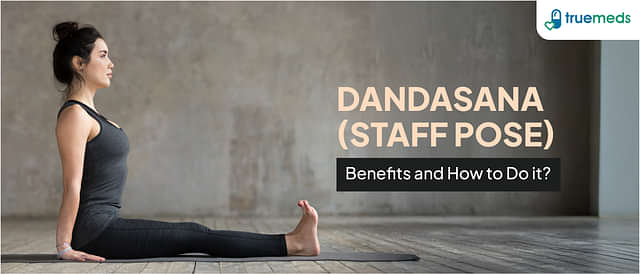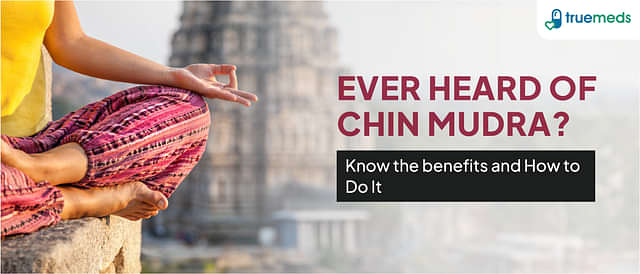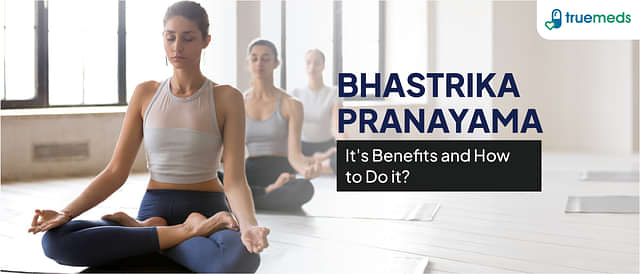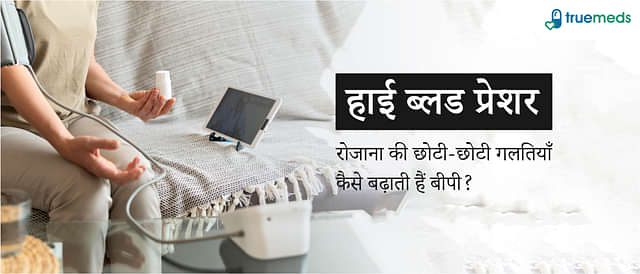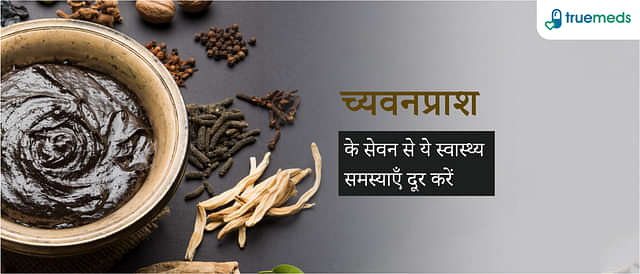Top Benefits of Butterfly Pose for Your Health and How to Do It
Last updated on : 01 Dec, 2025
Read time : 9 min
What is Butterfly Pose/Asana?
The Butterfly Pose, also known as Baddha Konasana or Upavistha Titli Asana, derives its name from Sanskrit. Upavistha means “seated,” Titli means “butterfly,” and Asana refers to a pose or posture. Baddha Konasana translates to ‘Bound Angle Pose’ (Baddha means ‘bound,’ Kona means ‘angle’). In this pose, the soles of the feet are placed together while the knees move up and down, resembling the fluttering wings of a butterfly—hence the common name, Seated Butterfly Pose. It is a beginner-friendly yoga asana that focuses on stretching the inner thighs, groins, and hips. This pose is beneficial for improving hip flexibility, which is considered foundational for many advanced yoga postures.
Butterfly Pose may be recommended during pregnancy and for individuals experiencing discomfort in the hips, lower back, hamstrings, or feet. While anecdotal evidence and traditional texts suggest it may offer relief to individuals with conditions such as rheumatoid arthritis, fibromyalgia, restless leg syndrome, and sciatica, the extent of these benefits can vary significantly, and practice should be gentle and cautious [1], [2]. Additionally, some practitioners suggest that it can help alleviate symptoms of PCOD/PCOS through stress reduction and improved pelvic circulation [3]. Keep reading to learn more about Baddha Konasana’s potential benefits, safe practice, and considerations during pregnancy.
Potential Benefits of Butterfly Pose (Baddha Konasana)
- Butterfly Pose is a fundamental hip-opening yoga posture. It encourages flexibility in the hips and pelvis, making it particularly beneficial for mobility. The potential benefits of this pose include:
- Improved Hip and Pelvic Flexibility: Regular practice of this pose is known to release stiffness and tightness from the hips and pelvic floor, improving the flexibility of the hip joints.
- Enhanced Posture and Spinal Alignment: By promoting a long spine while seated, it may help align and improve your overall body posture.
- Stimulation of Abdominal Organs: The pose is traditionally believed to enhance blood circulation in the pelvic region and may support the function of abdominal organs, including the kidneys and bladder.
- Support for the Reproductive System: In traditional yoga practice, the pose is believed to stimulate the ovaries and prostate gland, and some studies suggest it may help manage discomfort associated with conditions like dysmenorrhea (painful periods) [4].
- Relief from Muscular Tension in the Lower Body: Gentle stretching of the inner thighs and groins may help alleviate lower back pain associated with muscle tightness, and may help ease pressure on the sciatic nerve by stretching surrounding muscles (when performed without a deep forward fold) [2].
- Stress Reduction and Focus: As a grounding, seated posture, it can be used to improve mental focus and concentration, aiding in stress management.
Butterfly Pose Benefits During Pregnancy
Butterfly Pose (Baddha Konasana) can be particularly beneficial during pregnancy. Its primary utility is opening the hips and stretching the pelvic region, which may help prepare the body for labor by increasing flexibility and blood circulation [3].
- Pelvic Mobility: It may help maintain flexibility and tone around the pelvis during the second and third trimesters.
- Lower Back and Sciatic Relief: It can help alleviate lower back pain and discomfort commonly experienced during pregnancy.
- Postpartum Recovery: After delivery, and once cleared by a doctor (typically after the initial 40-day healing period), practicing this pose can support the recovery of muscle flexibility and help reduce back pain resulting from childbirth.
- Note on Safety: All pregnant women should use props (like blankets or bolsters) under the knees and consult their healthcare provider before starting or continuing yoga routines to ensure safety. Modifications, such as keeping the feet farther from the pelvis, are often necessary.
How to Do The Butterfly Pose (Baddha Konasana)
Let’s master the Butterfly Pose steps:
- Starting Position: Sit on a mat with your legs extended in front of you in Dandasana (Staff Pose). Place your hands by your sides and keep your spine long.
- Bend and Draw Feet In: Bend your knees and bring the soles of your feet together. Hold your ankles or feet with your hands and gently move your heels towards your groin to a comfortable distance.
- Establish Baddha Konasana: Exhale and let your knees fall open to the sides. Grip your feet with your hands, interlocking your fingers. Ensure your spine is tall and upright in Baddha Konasana (Bound Angle Pose). Take a moment to ground yourself and connect with your breath.
- Forward Fold (Optional, Advanced): Inhale, lengthen your spine, and open your chest. Exhale, hinge from your hips, and fold forward. Keep your back flat and avoid rounding your spine to protect the lower back. Do not strain the neck; if you feel tension, lift your head slightly and use a prop under your forehead.
- Hold the Pose: Stay in the posture for about six breaths or as long as comfortable. Fix your gaze down or close your eyes, taking slow, deep breaths.
- Release: Inhale and lift your torso. Exhale, use your hands to bring your knees together. Straighten your legs and return to Dandasana.
Tips and Precautions for Butterfly Pose
Here are some safety tips and precautions to keep in mind for the safe practice of this pose:
- Warm-up: Begin with gentle preparatory poses such as Sukhasana (Easy Pose) and Dandasana to warm up your hips and lower body.
- Use Props: Use props (blanket, bolster, blocks) under your thighs or knees if they do not comfortably reach the floor. This provides support and prevents excessive strain on the hip joints.
- Forward Fold Safety: If folding forward, focus on the gentle stretch in the hips, not on getting your head to the floor. Use a block or blanket to rest your forehead if a deep fold is comfortable.
- Counterposes: After this pose, practice relaxing counterposes like Dandasana or a gentle Seated Forward Bend (Paschimottanasana).
Risks and Contraindications of Butterfly Pose
While generally safe, individuals with specific conditions should exercise caution.
- Knee Injury: If you experience any sharp or intense pain in the knees, immediately back off from the pose or place blankets/blocks under your knees for support. Avoid the pose entirely if pain persists.
- Severe Back Injury or Surgery: If you have a severe lower back injury, such as a herniated disc or acute disc bulge, avoid deep forward bends like the full Butterfly pose. These can strain the spine further. Practice the pose upright (Baddha Konasana) without folding forward.
- Acute Sciatica: If you are experiencing acute sciatic pain, avoid deep forward bends as they can exacerbate the pain. The upright Butterfly Pose is generally safer, but always consult a physical therapist or doctor.
- Menstruation: While the Butterfly pose may support healthy menstruation, some women may experience increased flow if they practice it during their period, which can lead to fatigue. To ease cramps and practice safely, keep the feet further away from the pelvic floor.
Wrapping Up
Butterfly Pose (Baddha Konasana) is a valuable, beginner-friendly posture that can significantly improve hip and pelvic flexibility and may help relieve certain types of lower body and back tension. It is often used to support reproductive organ health and alleviate muscular tightness. Although it’s accessible, modifications and props are encouraged for comfort and safety. Always consult a certified yoga instructor for proper form, and ensure you follow up with a counterpose.
Frequently Asked Questions (FAQs)
What is the butterfly pose good for?
It may help relieve tightness in the hips, groins, and lower back. It may also promote circulation in the pelvic area, which is traditionally believed to benefit conditions like PCOD/PCOS and may offer mild relief for muscular discomfort related to conditions like fibromyalgia and sciatica.
Does Butterfly Yoga reduce belly fat?
Butterfly pose is a stretch and mobility exercise. While it improves flexibility and may reduce stress, it does not directly reduce belly fat. Fat loss is achieved through a combination of diet and cardiovascular or strength-training exercises.
What are the benefits of butterfly movement?
The movement (flapping the knees) helps to gently open up and stretch the hip joints and groin area, promoting flexibility and relieving tension. This gentle movement also encourages circulation in the pelvic region.
Who should not do the butterfly pose?
Individuals with acute or unstable knee or hip injuries, severe herniated discs, or acute sciatica should avoid the pose or practice only the upright version with caution, and ideally under the guidance of a medical expert or physical therapist.
Is the butterfly pose good for periods?
The Butterfly pose may help to alleviate menstrual cramps [4]. However, some women may experience increased flow if they practice a deep forward fold during their period. It is recommended to keep your feet further from the pelvic floor during menstruation to ease cramps and reduce strain.
References
[1] Javed, D., & Mishra, S. (2022). Yoga practices in Social Anxiety Disorder (SAnD): A case report WSR to paruresis. Journal of Ayurveda and Integrative Medicine, 13(3), 100622. https://doi.org/10.1016/j.jaim.2022.100622
[2] Sriram, S. V. (2014). Asana-Pranayama-Dhyana: An integrated practice. International Journal of Yoga, 7(1), 77–80. https://doi.org/10.4103/0973-613X.123479
[3] Khadka, R., Paudel, B. H., Lamsal, M., Shrestha, N., Regmi, M. C., Chhetri, S., & Karki, P. (2022). Effect of yoga on female hormones in peri-menopausal women. Journal of Pathology of Nepal, 12(1), 2098-2104. https://doi.org/10.3126/jpn.v12i1.44265
[4] Aprillia, S. R., Sri Wahyuni, S., & Widiastuti, D. (2023). The Effect Of Yoga Training Butterfly Pose, Child Pose, Cat And Cow Pose On The Intensity Of Primary Menstrual Pain (Dysmenorrhea). Journal of Applied Health Management and Technology, 5(2), 41–49. https://doi.org/10.31983/jahmt.v5i2.9746
Disclaimer
Our healthcare experts have carefully reviewed and compiled the information presented here to ensure accuracy and trustworthiness. It is important to note that this information serves as a general overview of the topic and is for informational purposes only. It is not intended to diagnose, prevent, or cure any health problem. This page does not establish a doctor-patient relationship, nor does it replace the advice or consultation of a registered medical practitioner. We recommend seeking guidance from your registered medical practitioner for any questions or concerns regarding your medical condition.
Popular Articles
Recommended Articles
Recent Articles
Company
About UsHealth ArticleHealth StoriesDiseases & Health ConditionsAyurvedaAll MedicinesAll BrandsNeed HelpFAQSecuritySubscribe
Registered Office Address
Grievance Officer
Download Truemeds
Contact Us
Our customer representative team is available 7 days a week from 9 am - 9 pm.
v4.8.0
2025 - Truemeds | All rights reserved. Our content is for informational purposes only. See additional information.
Our Payment Partners











